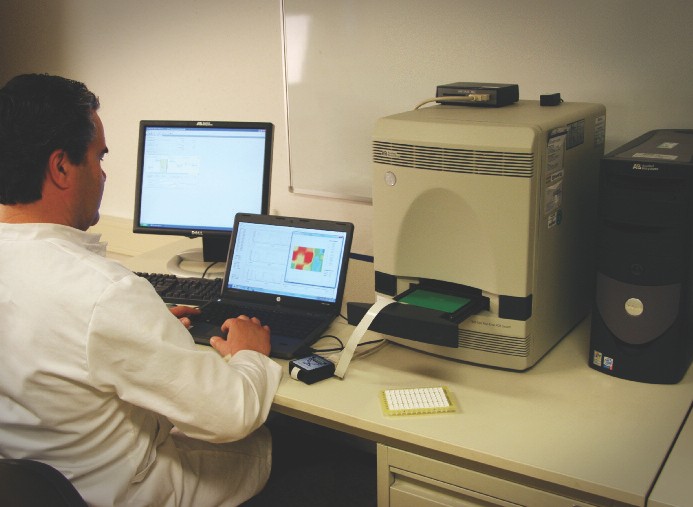
ISO17025 accredited calibration of a qPCR cycler in process. The outcome is validated against defined requirements and is also used to normalize its performance.
Normalized SOP’s for (q)PCR applications
Many laboratories have SOP (Standard Operation Procedures) in place. Incorporation of new components in SOP’s are generally labor and time consuming. In the (q)PCR process, variables as cyclers, plastic disposables, kit components and work procedures are typically described and incorporated in SOP’s. BIOplastics and CYCLERtest® have formulated a strategy which enables exclusion of the cycler as well as the used disposable variable. This strategy actually provides users the ability to normalize their SOP
How does it work?
Since BIOplastics manufactures the widest and most uniform range of (q)PCR disposables which fit any brand or model of (q)PCR cycler, and since BIOplastics produces its products identical in raw material properties and uniformity, one can exclude the disposable variation by using BIOplastics disposables. So instead of using a variety of disposables from different vendors resulting in different compositions and designs, required to fit your cycler range you can opt for one source (BIOplastics) only. Your disposables will then have exactly the same properties for different models of cyclers. By doing so you exclude differences in disposables.
Combine this knowledge with the CYCLERtest® calibration service or the purchase of a DRIFTCON® system which enables you to “fingerprint” your cycler thereby excluding the cyclers variable.
So how do you normalize your SOP:
categorize your most sensitive (q)PCR protocol
Select your best cyclers which gives you superior results
Select the BIOplastics (q)PCR disposable which fits your best, superior result, cycler
Perform the same test to assure that the BIOplastics product is working on your “best cycler”
Calibrate (DRIFTCON® or MTAS® service) your best cycler and define its temperature fingerprint.
Calibrate (DRIFTCON® or MTAS® service) all other cyclers in your laboratory and define their temperature fingerprint.
You have now the translation key of temperature fingerprint between all your cyclers
Modify your cycler protocol (temperature) of any of your cyclers to match your best cycler fingerprint
Purchase the required specific disposable for your other cyclers from BIOplastics assuring the same raw material composition and properties
RESULT: A UNIFORM SOP WHICH ASSURES IDENTICAL RESULTS REGARDLESS OF THE CYCLER USED
Problems in defining uniform SOP’s? Just let BIOplastics or CYCLERtest® know and we’ll guide you through this convenient solution!
So how do you normalize your SOP: Image2